Active Directory Console Overview
Instructions
Q&A (0)
Notes (0)
Resources (0)

Saving Progress...
Resources
There are no resources for this lesson.
Notes can be saved and accessed anywhere in the course. They also double as bookmarks so you can quickly review important lesson material.
In this lesson, I am going to be giving you an introduction to the Active Directory console.
Now, I am logged into my Domain Controller here, and I just want to start by clarifying that you can tell if you are on a Domain Controller by the inside of Server Manager, looking for the AD DS or Active Directory Domain Services role.
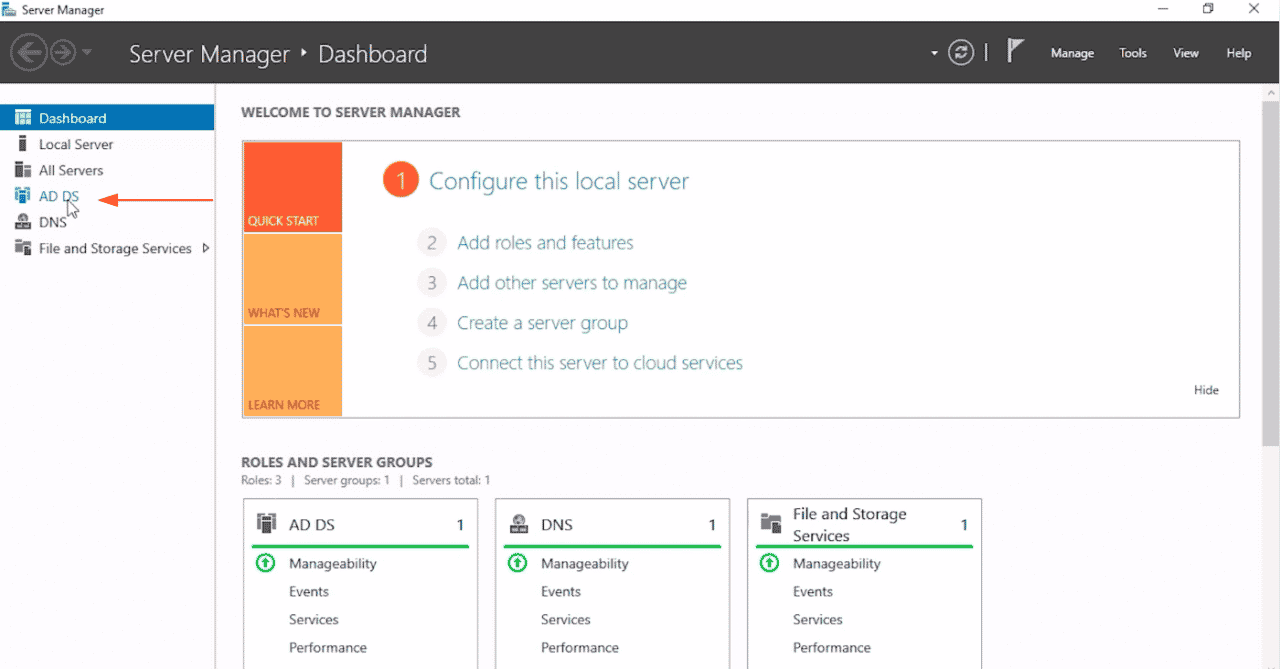
Now, there are other ways to start Active Directory, but what we are going to do is start it from within Server Manager.
Again, if you don't have Server Manager up you can click the Start button here, and just select Server Manager.
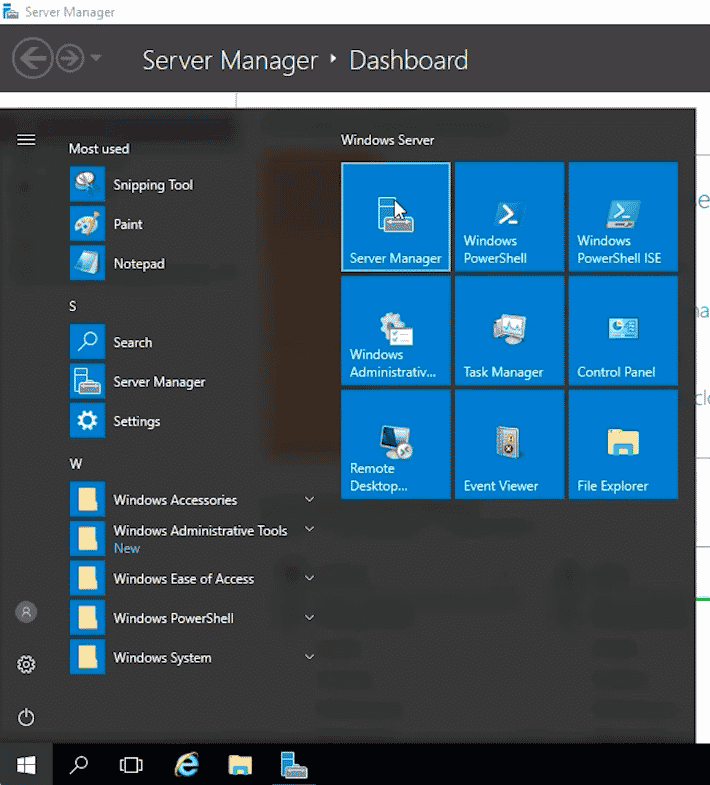
You can also search for Active Directory here, and if you are not able to log directly into the Domain Controller you can install tools like RSAT or the Remote Server Administration Toolset, and you can download and install the Active Directory console and connect remotely to your Active Directory Domain Controller.
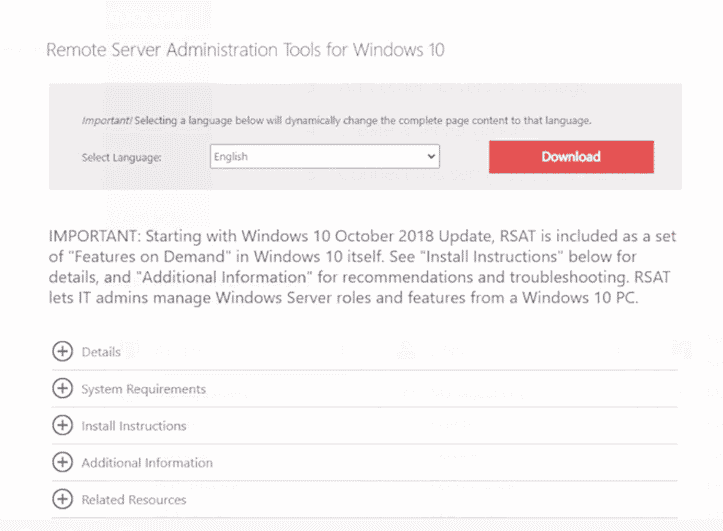
Now, once you have Server Manager open what we are going to do is select Tools in the top right-hand corner of the screen and we are going to select Active Directory Users and Computers. Nine times out of ten when somebody says, hey I need you to open Active Directory this is what they are talking about.

Now, you'll notice that there are more Active Directory consoles here like Active Directory Administrative Center, Domains and Trusts, Sites and Services, and the Module for PowerShell. Nine times out of ten they are going to be talking about Active Directory Users and Computers. So, we are going to select this, and the Active Directory console will open. I am going to go ahead and just maximize this and expand the screen here.
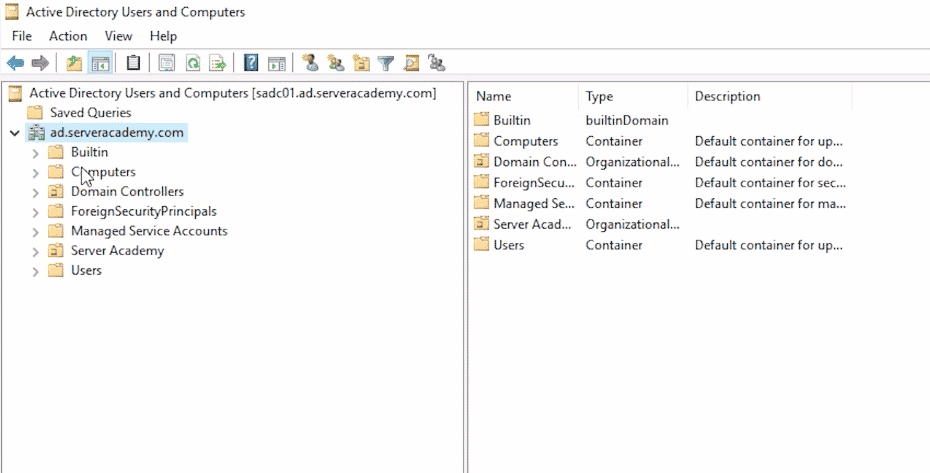
Now, what you'll notice here is on the left-hand side here we have a navigation pane and then we have the contents of our current directory. So, we have the Saved Queries here at the top, and our actual domain, which in this course and in our lab that you'll be using later on in the course is ad.serveracademy.com. We can click these drop-down arrows and expand any contents. I don't have any saved queries, so there's nothing to be listed here, but we can click on the domain and we can browse to these different folders, just like you would expect, like Windows Explorer, something similar like that.
Now, up here on the left we have our File menu which we can change some Options, really just for deleting files if we want to do disk cleanup. I've never had to do that but is there if you want to do that. We can also Exit the console.
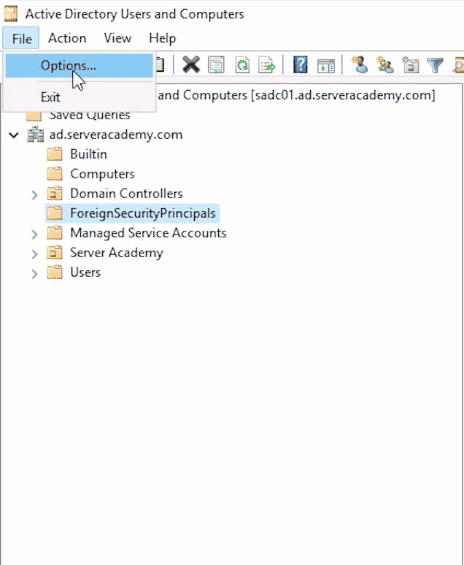
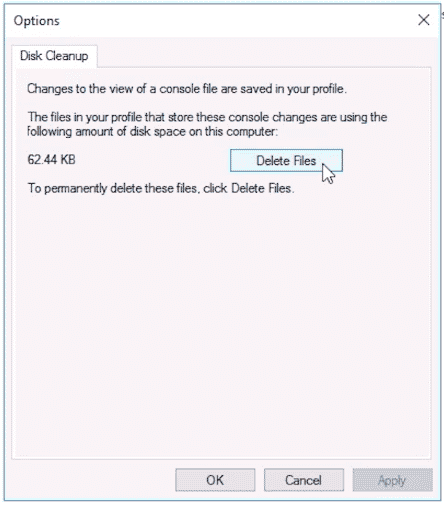
Under Action, we can create New Users, Computers, Groups, Printers, Shared Folders, and things like that.
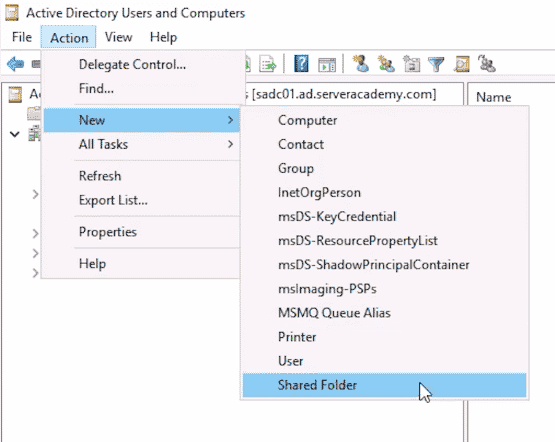
We can also complete Tasks that we may deem necessary by selecting an object and clicking the Action menu. Now, these setup tasks might be different depending on what kind of object we select, for example, if I select a user account here, and I click actions, I am going to get a different set of options than if I clicked the domain and clicked All Tasks.
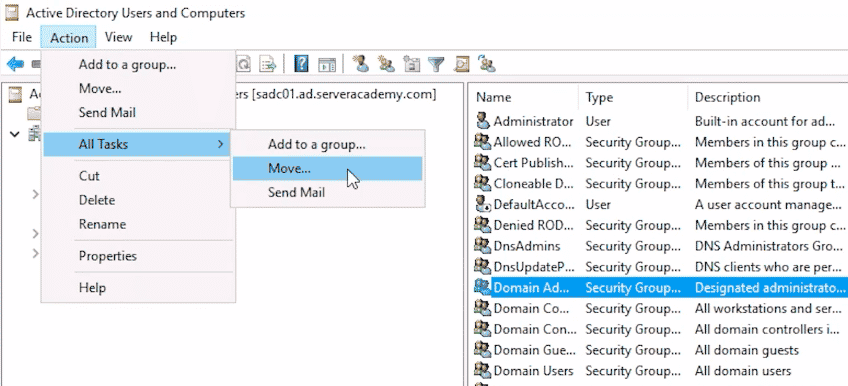
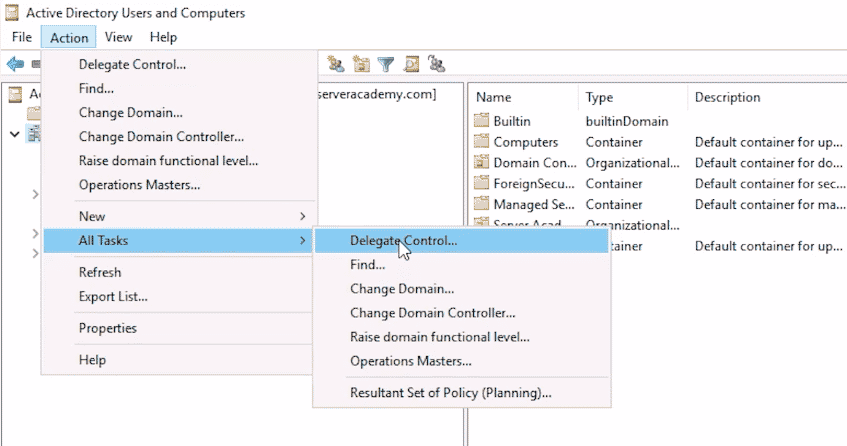
Now, you'll notice you can get to the same views by right-clicking the Active Directory object over here on the left and selecting All Tasks, and the same thing for users, if I right-click a user and All Tasks I get the same options.
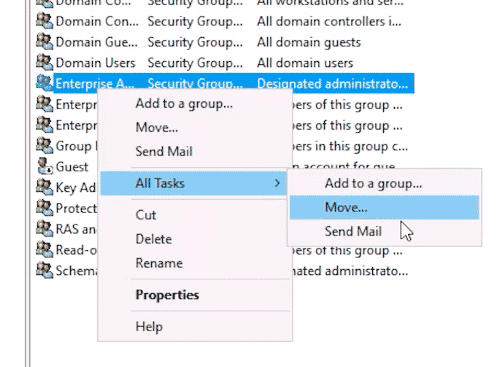
After Actions we have View, and the View allows us to change the size of icons, and most importantly what I would like to clarify here is we can turn On or Off Advanced Features and we can change our Filters Options.
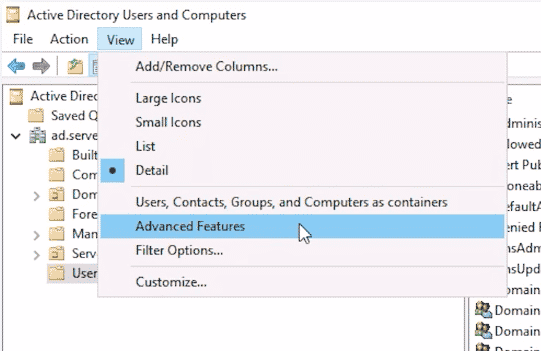
The Advanced Features will show you several different options that you probably don't want to be looking at unless you are an advanced administrator.
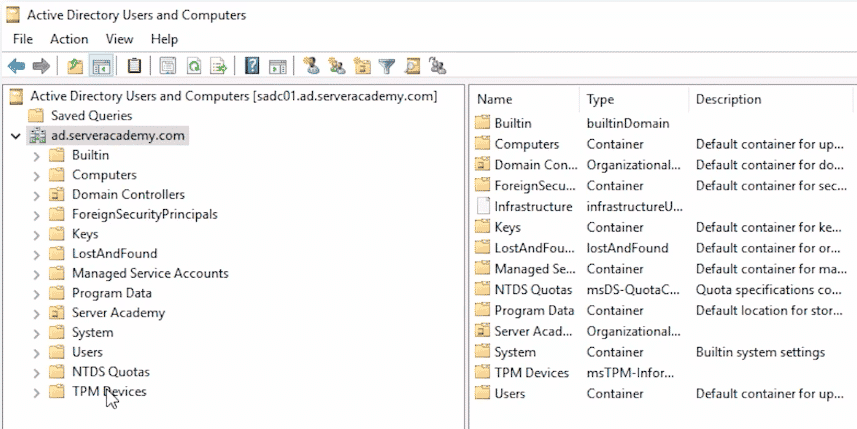
So we are just going to click View and turn that back Off and we are going to stick with the core items we have here already.
Next, we can click Filter Options, and this will allow us to change the number of maximum items displayed per folder, and this will come in handy.
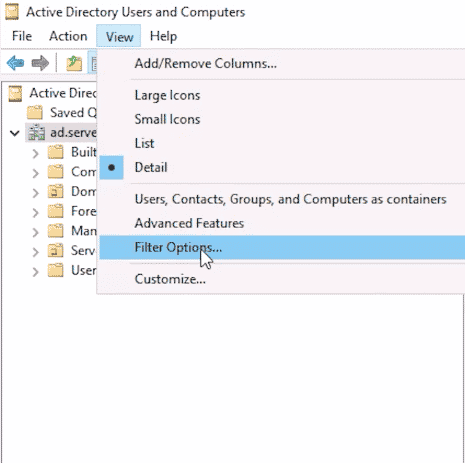
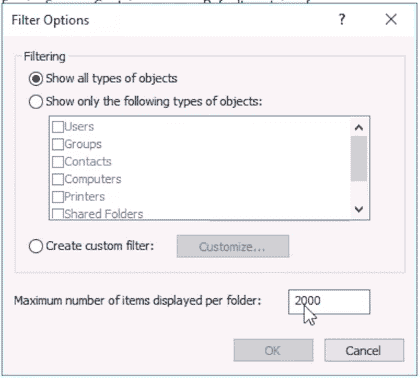
For example, if we look for our user's Organizational Unit here, I think there are about five thousand users but we will get an error message that 2000 of approximately 4600 are displayed.
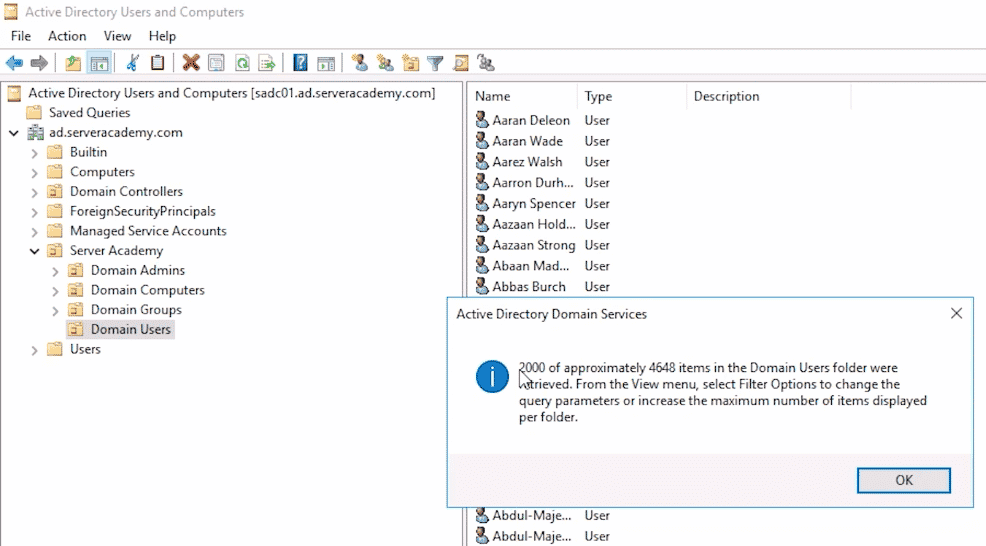
So, if we go to View, hit Filter Options, and we change this to 5000, we can hit OK, and once we go back to that OU we are going to be able to list all the users directly in this OU. Now, obviously, the limit of 2000 is there for performance reasons so it might be a good idea to just keep that number at 2000 instead of simply increasing the number of users that you want to list.
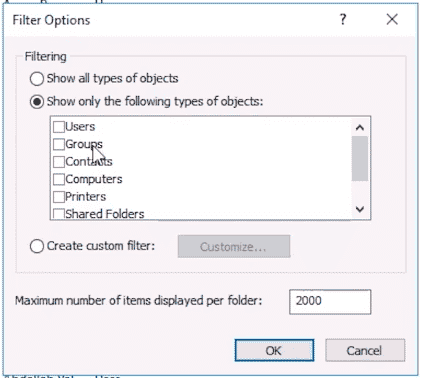
Again, if we need to filter for something different like, we have Printers, Computers, or Groups on the same OU we can filter for anyone one of these right here. I am going to uncheck this and click OK.
Finally, we can hit Customize and we can change some of the console or some of the toolbars and things that are listed here in MMC. This console is referred to as an MMC snap-in so that is why MMC is configured here, so we have menus and toolbars. We are just going to leave all these at the default but I just want you to know that it's there if you want.
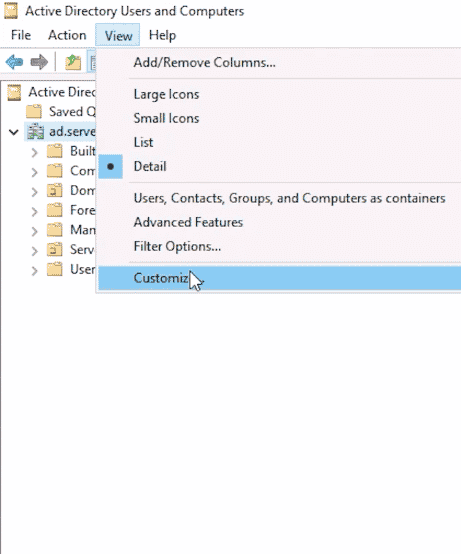
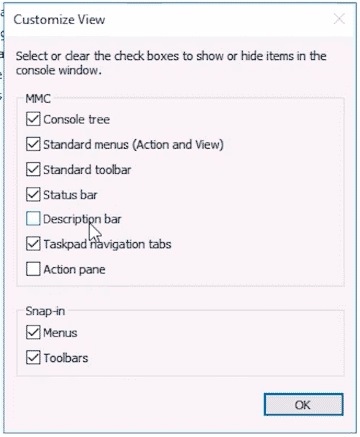
Again, we can click Help and get some Help Topics up here if we'd like. Most of the time you just want to Google what are you looking for, OK.
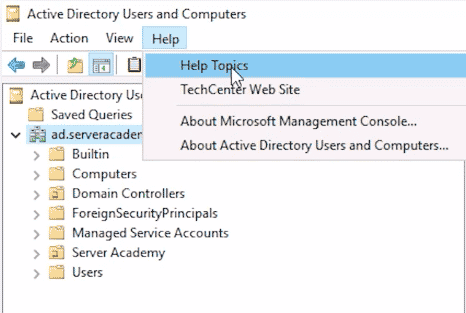
Here we have some Navigation. We can go Back or Forward, Up one level, that kind of thing. We can Copy and Paste. We can Refresh, we can Export a list of whatever the contents that we are looking at.
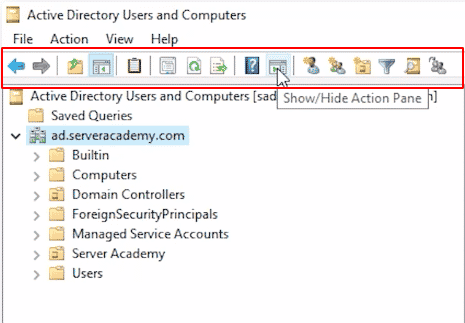
We can Show and Hide the Actions pane, which again if we go down here and select a user we can click more actions, All Tasks, again, this isn't too useful in my opinion, you can just simply right-click the user and kind of get the same thing. We can create a new user in this container, we can create a new group, OU, and we can set filtering options here. So, instead of clicking View, Filter Options, we can do it just by simply clicking the filter options here as well.
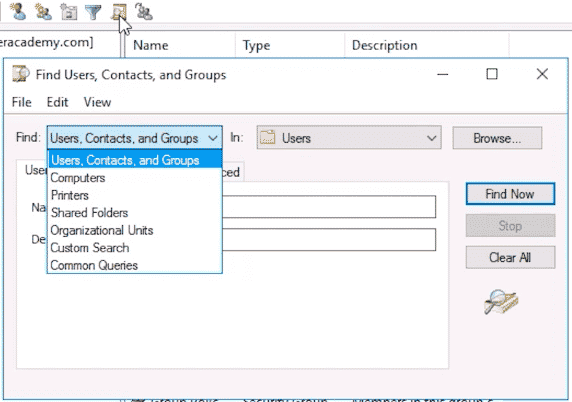
We are going to select what we want to find. Generally, you will be searching for a user or reset a user password for any reason for example or disable a user account. We are going to click this Find button and we are going to select the type of object we are looking for, and where we want to look for the user in. This is super important because if the user doesn't show maybe it is because it is in a different Organizational Unit, so you might have to hit Browse in case you want to change the OU you want to search in. Most of the time you just want to search the entire directory. And then type in the name you want to search for, so if I want to search for Sam I can hit Find Now, and here are all the users that we have in our domain that have Sam in their name.
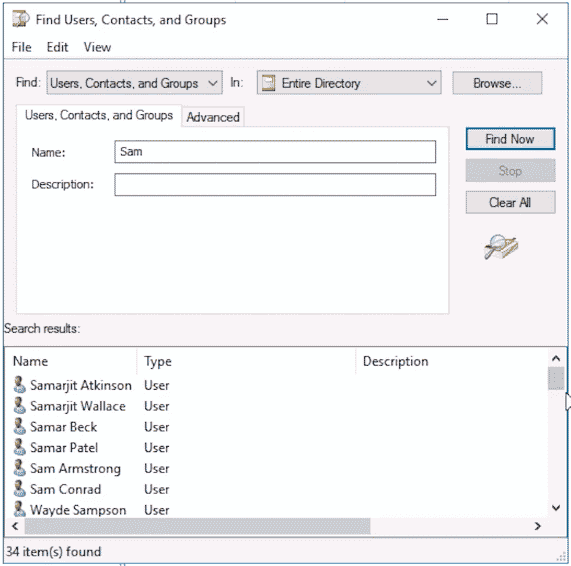
Now, again, these users are all demo users that I created in this lab, they are not real people. I just ran a script to create all these users so we have data to work with. So, just keep in mind that I tried to make this environment as realistic as possible but these are not real people obviously.
So that completes the overview of the Active Directory Console. Great job on getting through this one and I will see you in the next lecture.



Thank you for the intro, looking forward to the labs
Hi, besides videos, where can I check out the material or which book can you recommend?
Hi Nelisa Poni
Nelisa Poni
The book for general Windows Server knowledge for beginners we can recommend is:
Exam Ref 70-740 Installation, Storage and Compute with Windows Server 2016
https://www.microsoftpressstore.com/store/exam-ref-70-740-installation-storage-and-compute-with-9780735698826
It was geared toward the Windows Server 2016 certification, which has been retired, but many concepts still apply to administering a Windows Server.
Ricardo
Oh! Wow, must have been my poor network connection. The video was only playing and no content loaded but quickly realised there’s content provided. So looking forward for this new challenge. 😀 😀 😀 😀
Great!!! 😎
Need slow pace
Hi mildrene moutry
mildrene moutry
If you need to slow down the video a little bit, you can mouse over the video and click the cog wheel at the bottom right to adjust the speed.
Ricardo
Hi, where is the Lab we’re supposed to be using to follow along? Thank you
Hi ozn sotc
ozn sotc
It is under the Practice what you’ve learned section of the course.
Here’s the link:
https://www.serveracademy.com/courses/active-directory-fundamentals/active-directory-it-lab/
Ricardo
Great Intro.
Any way this topics on the left can be separated from the Lesson video on the right.
Hi Andrew Philip
Andrew Philip
There’s no option from the GUI to hide it, unfortunately.
Ricardo
Thank you.
How to fix WSUS updates not reporting on the server
Hi Bala Krishnan
Bala Krishnan
Can you elaborate a little more on the issue? I see you have posted here on the AD Overview lesson. Are the clients not reporting to WSUS or is it that the updates are not downloading to WSUS?
Ricardo
Link to the labs says page does not exist? I thought that you said the labs are included here for free but it tells me to upgrade plan when I try to access them?
Can you send us a link to the labs to check?
When I click on the link to the lab, it says page not found
https://serveracademy.com/courses/active-directory-fundamentals/active-directory-it-lab/
Hi Favour Nwaulune
Favour Nwaulune
We will review the link issue.